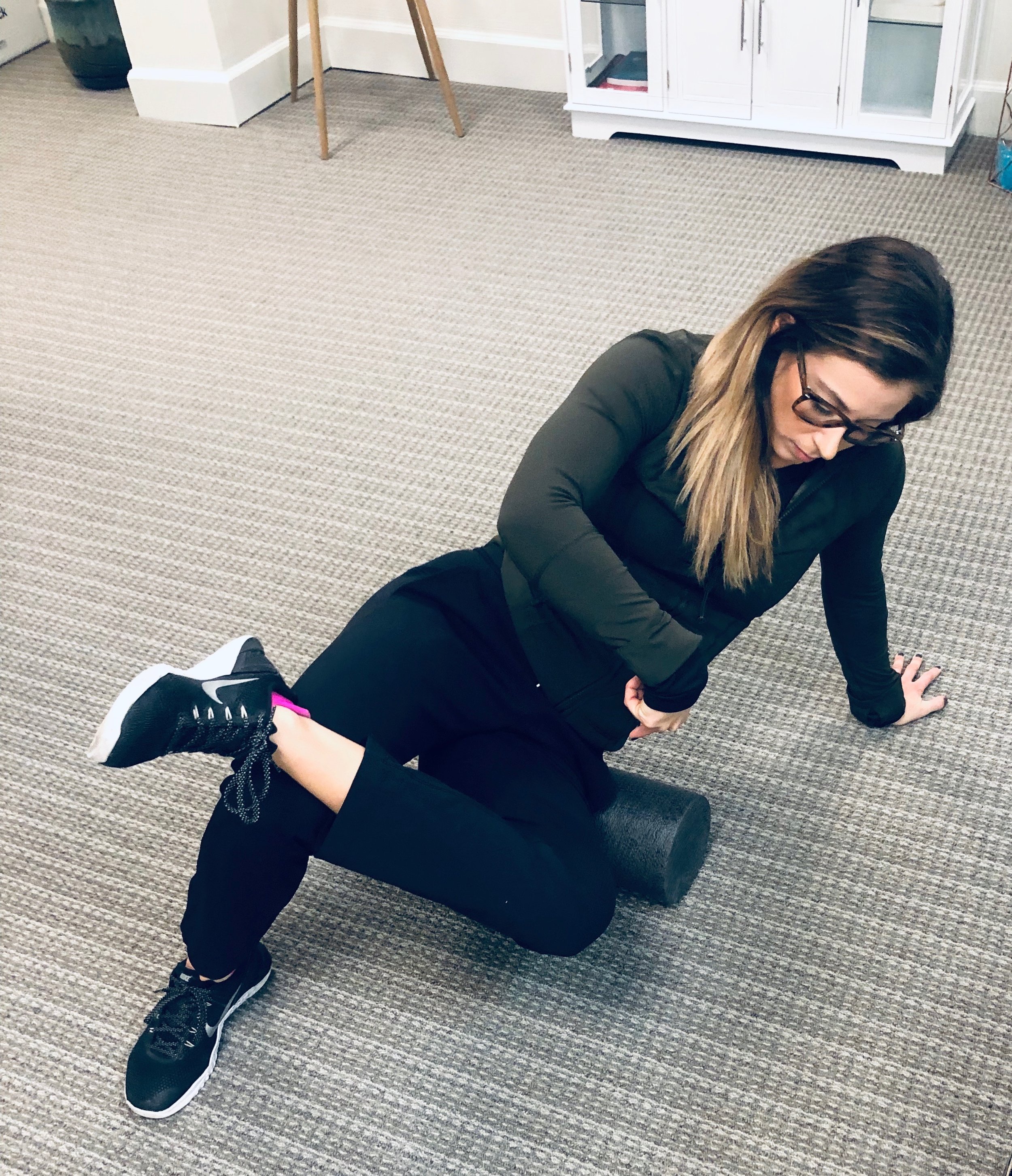Piriformis Syndrome: 4 Ways to Ease the Pain
Many of us are familiar with the terms “piriformis syndrome” and “sciatica,” but aren’t really sure what they pertain to specifically. These are both topics I touch on regularly in the office, so I would love to shed a little more light on 3 main topics. Exactly what piriformis syndrome is, how it relates to the sciatic nerve, and how to avoid it...because it’s a pain in the butt, literally!
First of all, let’s familiarize ourselves with the piriformis muscle itself. The word piriformis means “pear shaped,” and this small, fruit shaped muscle lies in the gluteal region. It originates on the front of the sacrum (the triangular bone at the base of your spine), and attaches to the top of your femur, or thigh bone. Its function is to externally rotate the hip (move your hip away from your body), and it also plays roles in flexion, extension, and abduction. Now let’s chat about the sciatic nerve, a thick bundle derived from the L4-S3 nerve roots in your lumbar (low back) spine. It passes underneath (and in some people, through) the piriformis muscle, down the back of the leg, and branches off into the smaller nerves of the feet.
Now that you have a little more information about the structures involved, we can move on to what actually happens in piriformis syndrome. Since the sciatic nerve passes underneath or through the piriformis muscle, it is easy to see that any tightness or irritation in this muscle can irritate the nerve, causing pain, numbness, or tingling that starts in the gluteal region. Pressure can be placed directly onto the nerve from activities like prolonged sitting (working, driving), or muscle spasms from a tightened, inflamed piriformis can compress the nerve, creating a local environment of inflammation. The latter is usually seen in athletes and avid gym goers who are lacking in the stretching and mobility department. The piriformis can also be tightened if you have a sacral misalignment, since the sacrum is one of the muscle attachments.
If you ever find yourself dealing with piriformis syndrome, don’t worry, here are 4 non-invasive ways you can ease the pain and relieve the pressure on the sciatic nerve!
1. Chiropractic Adjustments: Making sure your sacrum and pelvis are properly aligned will help treat piriformis syndrome by relieving tightness and pressure on the muscle.
If you start in this position and roll your body down, you will find yourself in the area of the piriformis.
2. Soft Tissue Therapy: Methods such as Graston technique, TheraGun therapy, Cupping therapy, or Electrical Muscle Stimulation will help loosen tight muscles, decrease inflammation, and increase mobility.
3. Stretching and Mobility: This is one of the easiest things you can do to relieve the symptoms of piriformis syndrome! Concentrate on the hips, glutes, hamstrings, and quads! One of my personal favorite stretches is the pigeon pose, which you can see to the right!
4. Ice/Heat Therapy: Alternating ice and heat over the affected area is also a simple at home treatment. 10-15 minutes of ice followed by 10-15 minutes of heat will work to decrease inflammation, and relax and lengthen tight muscles. (Always remember that when using an ice pack or heating pad, you should make sure to put a layer of clothing or a towel between you and the ice/heat, and never put it directly on your skin!)
Helping you feel your best with health + humor,
Dr. Jess
Click the link below to schedule your appointment today!

